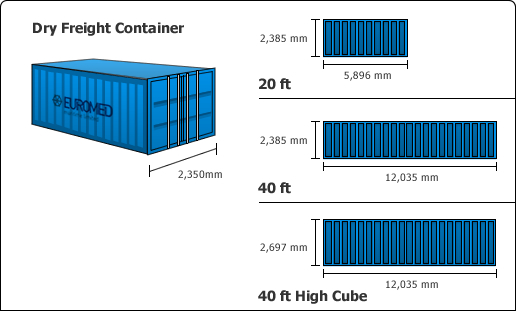

You can use a cubic meter calculator for the dimension of 20ft shipping container.Ĥ0-foot Container or 1 FFE: Another very common size, the 40-foot dry container is designed to carry and store more voluminous cargo rather than heavy cargo. This is suitable for heavy cargo such as minerals, metal, machinery, sugar, paper, cement, and steel coils. They are designed to carry more weight than voluminous cargo. They come in different shipping container dimensions and variants:Ģ0-foot Container or 1 TEU: The standard 20-foot shipping container or “dry van” is one of the most commonly used containers for shipment of goods as ocean freight. Dry containers (DC) are the most common type of container in the world, with 90% of sea freight loaded into them. Dry containers: These are called 'dry' because they don't have any temperature controls – they are basic containers for cargo such as toys and clothes. We’ve listed some of the most common cargo shipping container sizes and types below: 1. Essentially, the type of cargo and its needs will determine what kind of container you will require. There are endless types and sizes of freight containers and shipping equipment available for transporting your cargo. What type and size of shipping container do I need for my cargo? You can enjoy easy, online access to all our logistics services, including instant pricing, by signing up to our digital platform. Are you shipping cargo and goods all around the world? We've got you covered with the most frequently asked questions and answers on shipping container sizes and types.


 0 kommentar(er)
0 kommentar(er)
